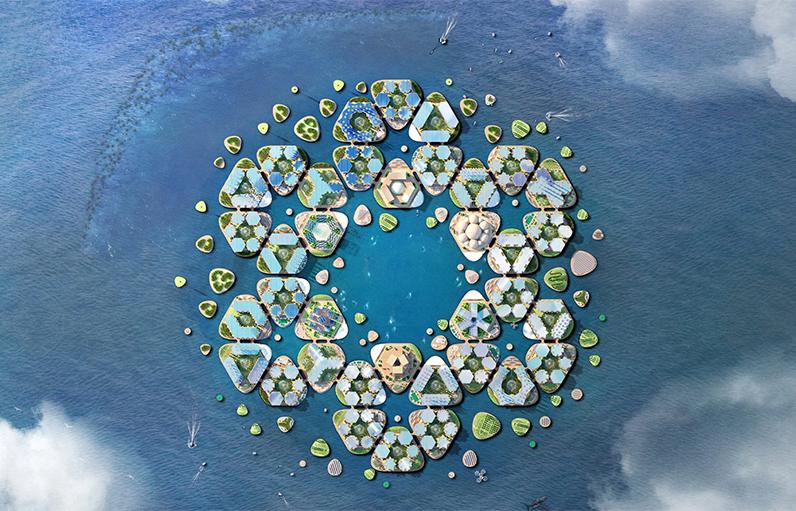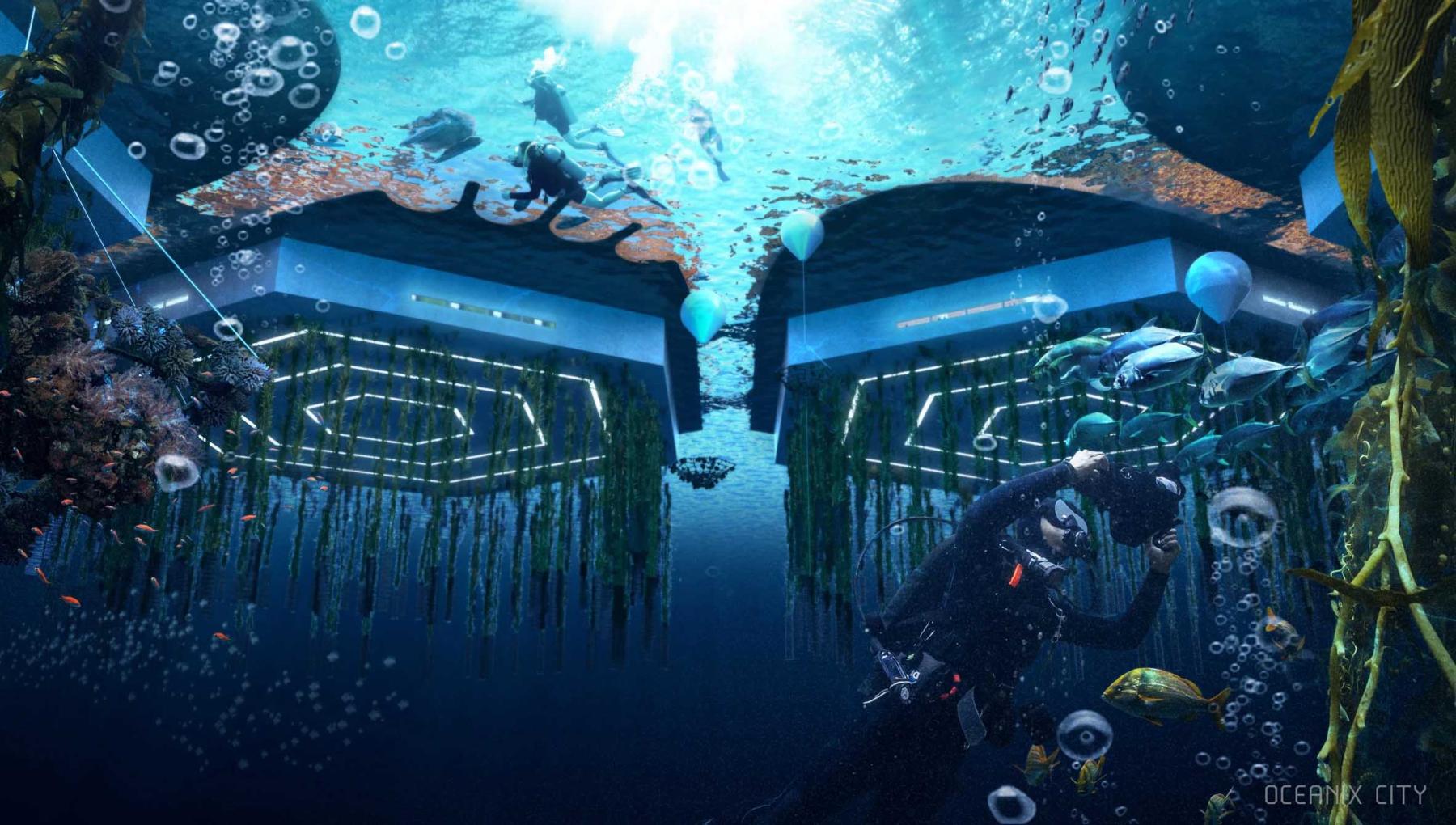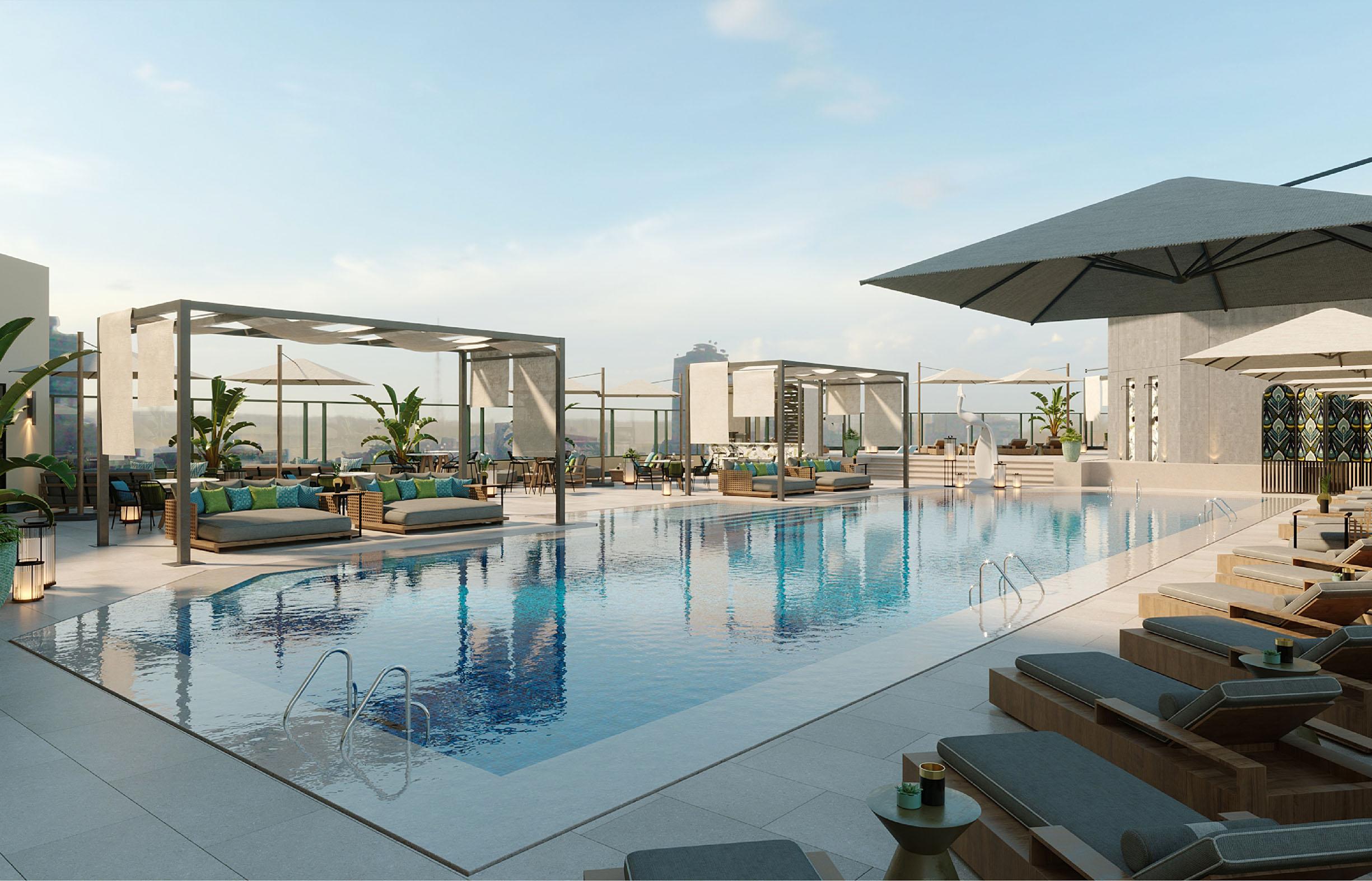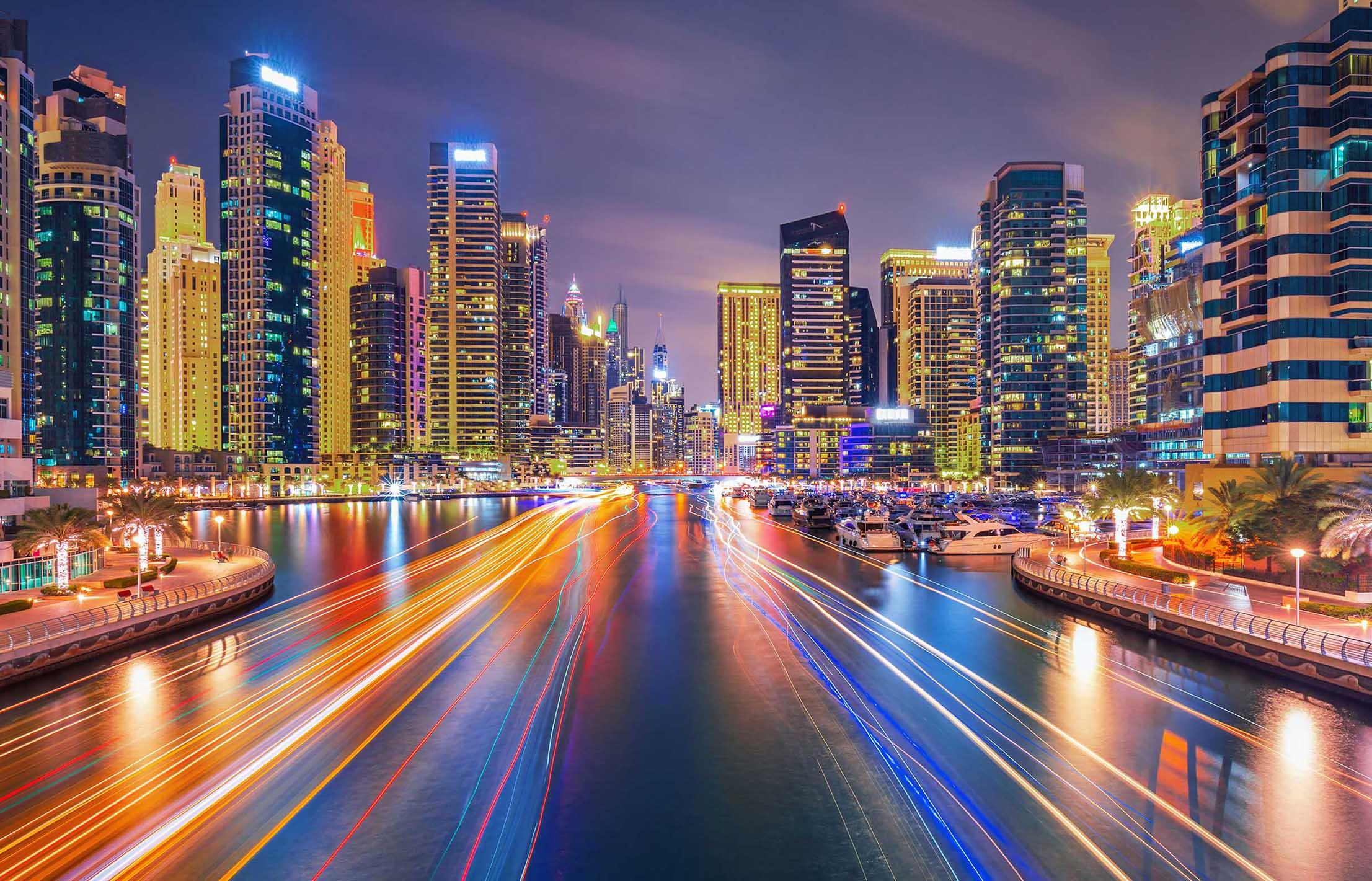
Written by: Farah Hassan
Date: 2024-05-29
A Visionary Solution to Global Environmental Challenges

A Visionary Solution to Global Environmental Challenges
Floating communities believing in harmonious living with life below the surface
As the world grapples with interrelated crises of population growth, ecosystem degradation, and accelerating climate change, a solution has emerged in the form of Oceanix City—a proposed floating community that takes a comprehensive, real-world approach to sustainable urban development.
Oceanix Origins
Oceanix, a company founded on the mission of revolutionizing conventional urban sprawl, is spearheading the creation of this resilient and self-sustaining floating city. Designed to host a population of 10,000 people on the water, Oceanix City has been developed through a collaborative effort with an impressive array of partners, including the architecture firm Bjarke Ingels Group (BIG), the Massachusetts Institute of Technology's Center for Ocean Engineering (MIC), the engineering firm Sherwood Design Engineers, the climate engineering company Transsolar KlimaEngineering, and the nonprofit Global Reef Alliance.
The Oceanix City model presents a novel urban infrastructure that could help human populations adapt to the most pressing environmental challenges of our time, such as rising sea levels, increasingly frequent and intense flooding events, and powerful coastal storms. By situating the city on water, the project's designers have created a clean slate to integrate cutting-edge technologies and holistic solutions for critical urban systems, including housing, energy, water, food, and mobility. This approach sidesteps the significant challenges associated with retrofitting existing cities, allowing for the realization of a truly sustainable and resilient urban community.
Built for the Blue
At the heart of the Oceanix City concept is a modular, hexagonal floating platform system that can be scaled and configured to accommodate residential, commercial, and civic spaces. These buoyant platforms will be constructed using sustainable materials and engineered to withstand extreme weather conditions, rising sea levels, and other climate-related stressors.
The building materials to be utilized for construction are locally sourced, vernacular materials such as wood and bamboo, devising a natural softness to the overall floating urbanscape. Concrete is the most common construction material for floating caissons. These concrete caissons float on the surface of the ocean as the upward buoyant force exerted on a body immersed in a fluid is equal to the weight of the fluid that the body displaces.
Renewable energy sources, such as solar, wind, and wave power, will be seamlessly integrated into the city's infrastructure to meet its energy demands, while advanced water treatment and closed-loop food production systems will ensure the self-sufficiency of the floating community.
Beyond its technical innovations, Oceanix City has been designed with a deep consideration for ecological and social sustainability. The city's layout and infrastructure have been carefully planned to minimize environmental impact, with green spaces, urban farms, and habitat restoration zones integrated throughout. This emphasis on coexistence with nature is further reflected in the city's transportation system, which will prioritize pedestrian access, cycling, and electric vehicles over private automobile use.
The dedication to sustainability is the key term driving everything, refusing to continue with unfettered urbanization and consumption in the way that the vast majority of cities operate. Partnered with UN-Habitat, which keeps them on track in this regard.

An Inclusive Demographic Profile
Oceanix City targets all demographics and aims at affordable and sustainable developments, offering a resolution to displaced communities in coastal areas in need; creating more attractive living environments that are not a privilege for only the rich and wealthy to favor desirable lifestyles that challenge modern-day environmental dilemmas.
Oceanix City will represent a cross-section of any normal city, with a mix of young, middle age, to retirees, and low, middle, and high income, speaking to all demographics because they are not building something uniform.
The project reimagines how the design of a sustainable floating city can enhance global interdisciplinary education and deepen a public understanding of nature and the hydrological realm; one that caters to a suitable environment for the population, addressing sustainability, resiliency, and contemporary architecture with minimal impact on the environment by opting for offshore occupancy.
Floating City Prototype: Oceanix Busan
In April 2022, the Second UN Roundtable on Sustainable Floating Cities, UN Habitat, the Republic of Korea’s Busan Metropolitan City, and Oceanix showcased the unveiling of the design for Oceanix Busan. Oceanix Busan seeks to supply innovative technology to coastal cities that are severely limited in land and even more so due to climate-related hazards.
The proposed floating city will consist of three interconnected platforms, collectively spanning 15.5 acres—the equivalent of a dozen football fields. According to the developers, this area can accommodate up to 12,000 residents.
Each platform will serve a distinct purpose: the Living platform will house residential buildings, local retailers, and a central community space; the Lodging platform will cater to visitors with retail, dining, and guest accommodations; and the Research platform will function as a co-working and research hub, featuring a temperature-controlled atrium for hydroponic agriculture.
The platforms are designed to rise and fall with the water, with the undersides coated in Biorock—a material that solidifies into a buoyant, concrete-like substance when exposed to a low electric current. This innovative technique allows the city to adapt to fluctuating sea levels without compromising the comfort of its residents.

Oceanix Busan: Sustainable Network
Oceanix Busan's sustainable ethos is central to its design. The city will be entirely car-free, with only pedestrian-friendly paths and autonomous electric vehicles, eliminating vehicle emissions. All energy will be sourced from clean, renewable sources, such as solar panels installed on the rooftops and floating platforms.
Each neighborhood will be self-sufficient in terms of water treatment and waste management, with waste being repurposed as energy, agricultural feedstock, and other useful materials.
While the cost and timeline for the Oceanix Busan project remain uncertain, the developers are optimistic about its potential. Oceanix's co-founder, Philipp Hofmann, stated that the solution is "applicable to any coastal environment, to any climate, and can be easily calibrated to their needs."
By embracing a holistic, technology-driven approach to sustainable urban development, Oceanix represents a bold and visionary response to the interconnected challenges facing our planet. As global urbanization continues to accelerate, the lessons and innovations emerging could have far-reaching implications for the future of human settlements and their relationship with the natural world.
It is not worthwhile to think about the future of urban planning and design without also taking into account the human-caused harms that have made us consider living offshore. The destiny of humanity is inextricably linked to that of the ocean, an underwater environment that makes up 70% of the planet's surface, generates over half of its oxygen, stores 50% more carbon dioxide than the atmosphere, and transfers heat from the equator to the north and south poles, all of which contribute to the regulation of our climate and weather patterns.





